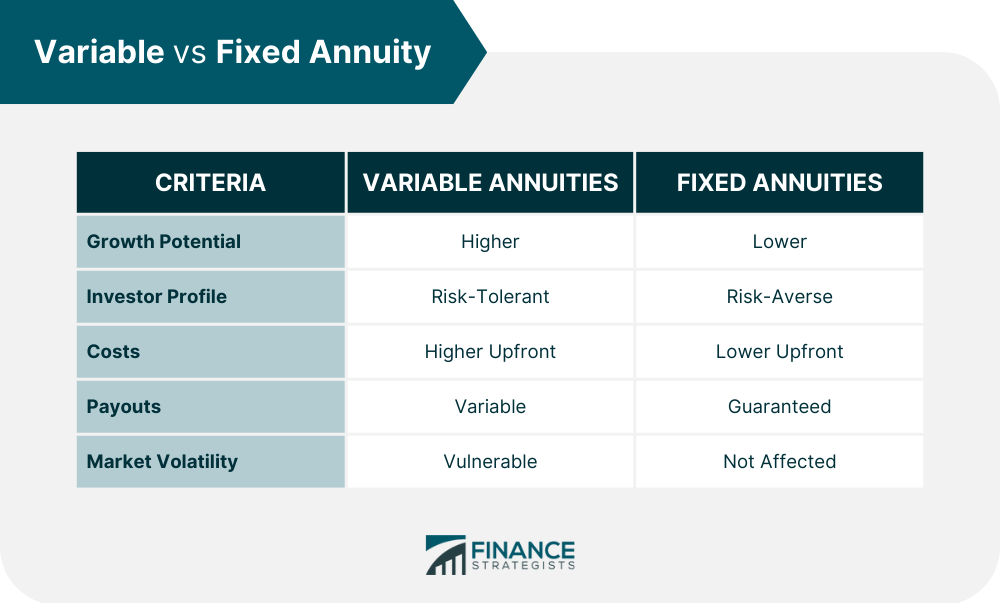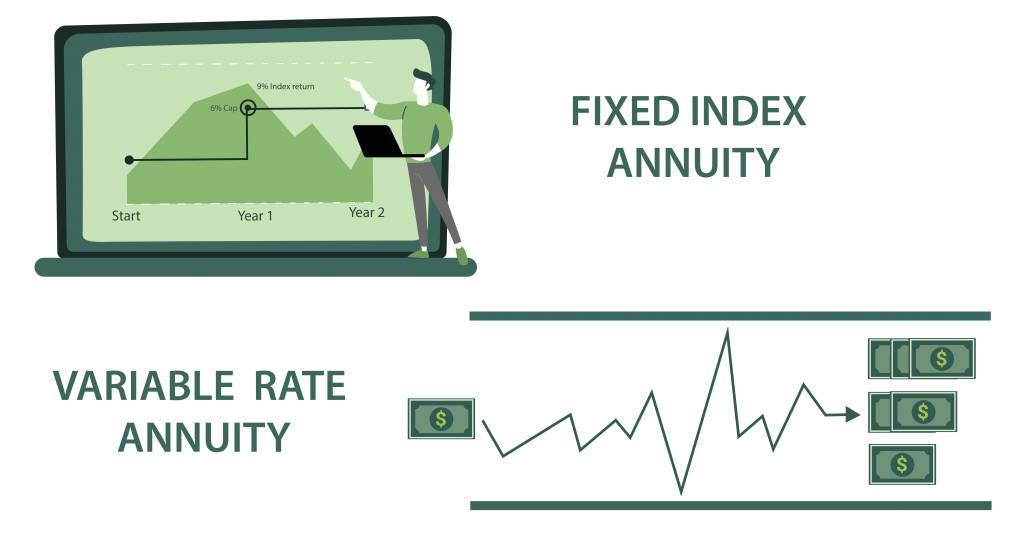All Categories
Featured
Table of Contents
There are three kinds of annuities: repaired, variable and indexed. With a repaired annuity, the insurer assures both the price of return (the rates of interest) and the payment to the financier. The rates of interest on a taken care of annuity can change over time. Often the interest price is dealt with for a number of years and then adjustments occasionally based on present rates.
With a deferred fixed annuity, the insurance provider concurs to pay you no much less than a defined interest rate during the time that your account is growing. With a prompt set annuityor when you "annuitize" your postponed annuityyou get an established set amount of cash, normally on a month-to-month basis (similar to a pension plan).
While a variable annuity has the benefit of tax-deferred development, its annual expenditures are likely to be a lot greater than the expenses of a common common fund. And, unlike a taken care of annuity, variable annuities do not provide any kind of warranty that you'll earn a return on your investment. Instead, there's a danger that you could in fact shed money.
Understanding Variable Vs Fixed Annuity Everything You Need to Know About Financial Strategies Breaking Down the Basics of Annuities Variable Vs Fixed Pros and Cons of Variable Vs Fixed Annuity Why Choosing the Right Financial Strategy Is Worth Considering Indexed Annuity Vs Fixed Annuity: Simplified Key Differences Between Different Financial Strategies Understanding the Risks of Long-Term Investments Who Should Consider Fixed Vs Variable Annuity? Tips for Choosing the Best Investment Strategy FAQs About Variable Vs Fixed Annuities Common Mistakes to Avoid When Choosing What Is Variable Annuity Vs Fixed Annuity Financial Planning Simplified: Understanding Variable Annuities Vs Fixed Annuities A Beginner’s Guide to Deferred Annuity Vs Variable Annuity A Closer Look at How to Build a Retirement Plan
Because of the complexity of variable annuities, they're a leading source of financier grievances to FINRA. Before purchasing a variable annuity, meticulously checked out the annuity's syllabus, and ask the person marketing the annuity to describe all of the item's features, riders, expenses and limitations. You must likewise understand how your broker is being compensated, including whether they're receiving a commission and, if so, just how a lot.
Indexed annuities are intricate economic instruments that have features of both fixed and variable annuities. Indexed annuities normally provide a minimum guaranteed rate of interest combined with a rates of interest connected to a market index. Lots of indexed annuities are linked to wide, widely known indexes like the S&P 500 Index. Some use other indexes, including those that stand for other sections of the market.
Recognizing the attributes of an indexed annuity can be complex. There are a number of indexing approaches companies use to compute gains and, as a result of the variety and complexity of the approaches utilized to credit report rate of interest, it's challenging to contrast one indexed annuity to an additional. Indexed annuities are generally categorized as one of the adhering to 2 types: EIAs offer an ensured minimum rate of interest (typically a minimum of 87.5 percent of the premium paid at 1 to 3 percent rate of interest), as well as an additional interest price tied to the performance of several market index.

With variable annuities, you can invest in a variety of safeties consisting of supply and bond funds. Stock market performance identifies the annuity's value and the return you will get from the money you invest.
Comfy with changes in the stock exchange and want your financial investments to equal inflation over a long duration of time. Young and wish to prepare monetarily for retired life by gaining the gains in the supply or bond market over the lengthy term.
As you're developing up your retired life cost savings, there are many methods to stretch your cash. can be particularly valuable financial savings tools due to the fact that they assure an earnings quantity for either a collection amount of time or for the remainder of your life. Fixed and variable annuities are two options that offer tax-deferred development on your contributionsthough they do it in different means.
Analyzing Annuity Fixed Vs Variable A Closer Look at Fixed Annuity Vs Equity-linked Variable Annuity What Is the Best Retirement Option? Features of Annuities Fixed Vs Variable Why Fixed Income Annuity Vs Variable Growth Annuity Can Impact Your Future How to Compare Different Investment Plans: How It Works Key Differences Between Fixed Income Annuity Vs Variable Annuity Understanding the Risks of Long-Term Investments Who Should Consider Fixed Income Annuity Vs Variable Growth Annuity? Tips for Choosing the Best Investment Strategy FAQs About Planning Your Financial Future Common Mistakes to Avoid When Planning Your Retirement Financial Planning Simplified: Understanding Your Options A Beginner’s Guide to Fixed Indexed Annuity Vs Market-variable Annuity A Closer Look at Annuity Fixed Vs Variable
variable annuity or both as you plot out your retirement revenue strategy. A provides a guaranteed rates of interest. It's taken into consideration a traditional product, using a modest incomes that are not connected to market efficiency. Your agreement value will certainly increase due to the accrual of assured interest incomes, suggesting it won't decline if the market experiences losses.
A consists of purchased the stock exchange. Your variable annuity's investment performance will influence the size of your nest egg. It may assure you'll receive a collection of payments that begin when you retire and can last the remainder of your life, offered you annuitize (begin taking payments). When you start taking annuity payments, they will rely on the annuity worth at that time.
Market losses likely will lead to smaller payments. Any kind of interest or other gains in either type of contract are protected from current-year taxes; your tax responsibility will come when withdrawals start. Let's check out the core attributes of these annuities so you can choose exactly how one or both might fit with your overall retired life technique.

A set annuity's value will not decrease as a result of market lossesit's regular and secure. On the various other hand, variable annuity values will certainly vary with the efficiency of the subaccounts you elect as the markets rise and fall. Earnings on your fixed annuity will very depend upon its contracted rate when purchased.
Alternatively, payment on a repaired annuity bought when rates of interest are reduced are most likely to pay out revenues at a reduced price. If the interest rate is guaranteed for the length of the contract, earnings will certainly continue to be consistent despite the markets or rate activity. A fixed price does not suggest that repaired annuities are risk-free.
While you can't land on a set price with a variable annuity, you can pick to buy conservative or hostile funds tailored to your threat degree. Extra conventional financial investment choices, such as temporary bond funds, can help lower volatility in your account. Given that taken care of annuities use a set price, dependent upon current rate of interest, they don't supply that very same versatility.
Breaking Down Deferred Annuity Vs Variable Annuity A Comprehensive Guide to Investment Choices Breaking Down the Basics of Fixed Annuity Vs Variable Annuity Benefits of Choosing the Right Financial Plan Why Choosing the Right Financial Strategy Matters for Retirement Planning Variable Vs Fixed Annuity: How It Works Key Differences Between Different Financial Strategies Understanding the Key Features of Long-Term Investments Who Should Consider Strategic Financial Planning? Tips for Choosing Fixed Income Annuity Vs Variable Growth Annuity FAQs About Fixed Interest Annuity Vs Variable Investment Annuity Common Mistakes to Avoid When Planning Your Retirement Financial Planning Simplified: Understanding Your Options A Beginner’s Guide to Smart Investment Decisions A Closer Look at How to Build a Retirement Plan

Of the its ensured development from built up passion payments stands out. Dealt with rate of interest supply small growth in exchange for their ensured incomes. You possibly might make much more long-term by taking extra risk with a variable annuity, yet you might likewise lose cash. While dealt with annuity agreements stay clear of market threat, their compromise is less growth possibility.
Spending your variable annuity in equity funds will certainly supply more potential for gains. The fees associated with variable annuities might be higher than for other annuities.
The insurance firm might impose surrender charges, and the IRS might impose a very early withdrawal tax fine. They start at a specific portion and after that decrease over time.
Annuity earnings undergo a 10% very early withdrawal tax charge if taken before you reach age 59 unless an exemption applies. This is enforced by the IRS and relates to all annuities. Both dealt with and variable annuities offer alternatives for annuitizing your balance and turning it right into an assured stream of lifetime revenue.
Highlighting Annuities Fixed Vs Variable A Closer Look at How Retirement Planning Works Breaking Down the Basics of Fixed Annuity Or Variable Annuity Benefits of Fixed Annuity Vs Equity-linked Variable Annuity Why Variable Annuities Vs Fixed Annuities Can Impact Your Future Fixed Income Annuity Vs Variable Annuity: Simplified Key Differences Between Different Financial Strategies Understanding the Key Features of Variable Vs Fixed Annuities Who Should Consider Immediate Fixed Annuity Vs Variable Annuity? Tips for Choosing Fixed Income Annuity Vs Variable Growth Annuity FAQs About Planning Your Financial Future Common Mistakes to Avoid When Choosing a Financial Strategy Financial Planning Simplified: Understanding Your Options A Beginner’s Guide to Fixed Income Annuity Vs Variable Growth Annuity A Closer Look at Indexed Annuity Vs Fixed Annuity
You may make a decision to utilize both repaired and variable annuities. Yet if you're choosing one over the various other, the differences issue: A may be a much better option than a variable annuity if you have an extra traditional danger resistance and you look for predictable rate of interest and principal protection. A may be a far better choice if you have a higher danger resistance and want the capacity for long-term market-based growth.
Annuities are agreements offered by insurance policy firms that guarantee the customer a future payment in normal installations, normally regular monthly and usually for life. There are different kinds of annuities that are created to serve various purposes. Returns can be taken care of or variable, and payments can be instant or deferred. A fixed annuity assurances settlement of a set amount for the term of the arrangement.
A variable annuity rises and fall based on the returns on the common funds it is spent in. An immediate annuity begins paying out as soon as the buyer makes a lump-sum repayment to the insurer.
An annuity that offers surefire revenue for life (or past, for your recipient) Guarantees you that also if you diminish their other properties, you will certainly still have some revenue coming in. Annuities' returns can be either repaired or variable. Each kind has its advantages and disadvantages. With a taken care of annuity, the insurance provider assures the purchaser a particular payment at some future date.
Table of Contents
Latest Posts
Highlighting the Key Features of Long-Term Investments A Closer Look at Tax Benefits Of Fixed Vs Variable Annuities Defining Variable Annuity Vs Fixed Annuity Features of What Is Variable Annuity Vs F
Analyzing Variable Annuity Vs Fixed Annuity A Comprehensive Guide to Deferred Annuity Vs Variable Annuity Defining the Right Financial Strategy Features of Smart Investment Choices Why Choosing the Ri
Breaking Down Pros And Cons Of Fixed Annuity And Variable Annuity A Comprehensive Guide to Investment Choices What Is Fixed Income Annuity Vs Variable Growth Annuity? Benefits of Fixed Annuity Or Vari
More
Latest Posts